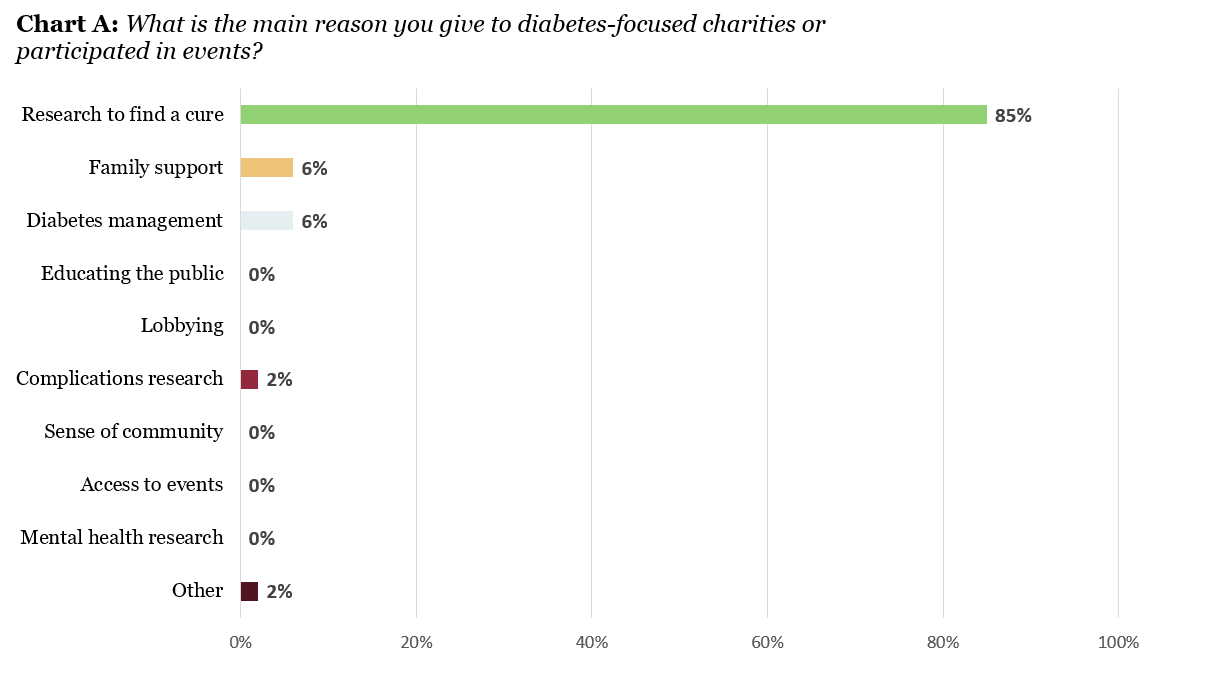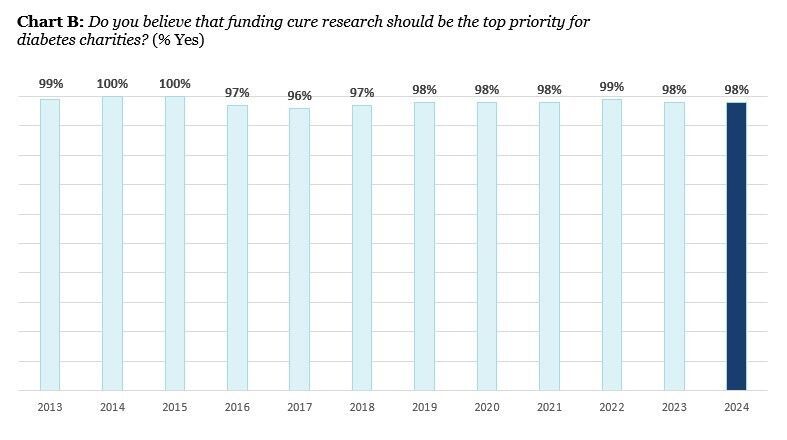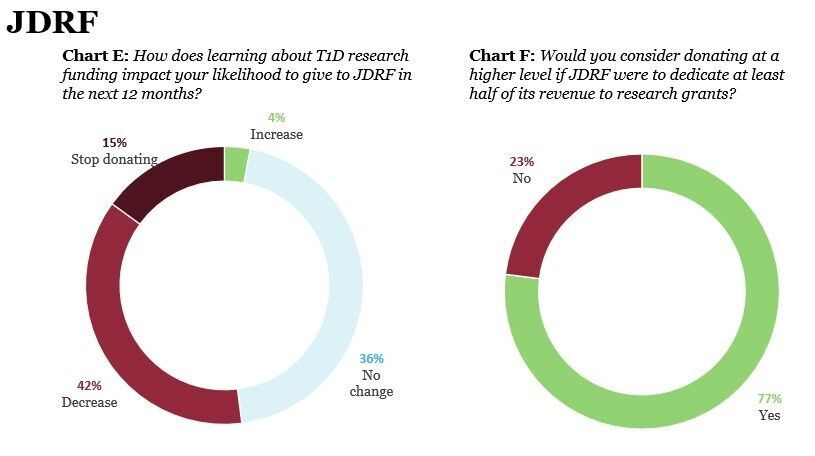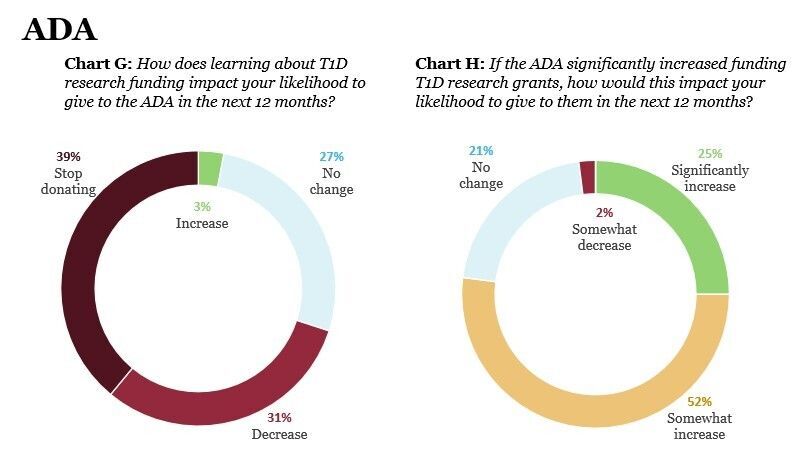
At a Glance:
- 98% of donors say cure research is their top priority.
- 92% would donate directly to a Practical Cure initiative if given the option.
- 64% (average) say they will decrease or stop donating if nonprofits do not increase funding for cure research.
- 77% say they would give more if nonprofits notably increased cure research funding.
March 7, 2024
This is the 13th year the JDCA has conducted the annual T1D donor sentiment survey, and the results are in. The survey was sent to people who have given money to or participated in events for diabetes research and who are directly impacted by type 1 diabetes, including those living with the disease, family members, and volunteers. The twelve-question survey was fielded in late February of 2024.
This survey measures the priorities and values of the T1D community. Asking “Where do YOU want your money to go?” the survey helps us understand what donors look for in charitable organizations, what they want their money to fund, and what they value most.
This survey is vital for the T1D research landscape, giving us the opportunity to gather the thoughts, values, and opinions of the T1D donor community and present the results to diabetes research organizations as the Voice of the Donor.
Key Takeaways
1. Donors Give with the Expectation They Are Funding a Cure
When asked why someone gives to a diabetes-focused charity or initiative, the possible answers are endless. Oftentimes it's a medley of reasons, each well-defined and backed with personal significance. The survey asked donors to pick the single most important reason they chose to give to a diabetes-focused charity. Despite the variety of options presented, 85% stated they donated to support cure research (see chart A).
As a follow-up, we asked donors if they felt cure research should be the top-funding priority for diabetes charities, to which we received a resounding 98% of respondents who answered “Yes” (see chart B).


2. Donors Prioritize a Practical Cure
A “Practical Cure’ is a term that often appears in JDCA reports. It was developed by people living with T1D today and illustrates what the community believes a cure should look like. Other organizations sometimes refer to a Practical Cure as a ‘Functional Cure.’
A Practical Cure is any solution that offers a near-normal quality of life for a patient with long-term T1D. This constitutes a life free from the burden of constant monitoring, worrying, and measured diet, without requiring immunosuppressants, lengthy hospital stays, or risking adverse side effects. This differs from a ‘perfect’ cure, a one-and-done solution to reverse T1D completely, which has been researched thus far to no avail and could be generations away.
After presenting donors with the definition, we asked several questions about the importance they place on Practical Cure research when donating (see charts C, D). The results mimic those we have been receiving for the past thirteen years: T1D donors want a Practical Cure.
- 98% of survey takers said a Practical Cure would improve the quality of life for those living with T1D.
- 92% would donate directly to a Practical Cure initiative if the option was made readily available.


3. If JDRF and the ADA Dedicate More Funding to Cure Research, 77% Would Increase Donations
The final questions of the survey pertained to two of the largest diabetes nonprofit organizations: the JDRF and the American Diabetes Association (ADA). When donors give to diabetes-focused organizations monetarily or by participating in events, the assumption is that their contributions directly fuel T1D research. In reality, most of a nonprofit’s revenue is used to fund public outreach, fundraising, managerial expenses and, in some cases, type 2 diabetes.
According to public 2022 financials from both institutions:
- JDRF spent 30% of its revenue on T1D research.
- The ADA gave less than 4% of its annual revenue to T1D-specific research. This amounts to 12% of the ADA's total research budget.
We showed donors how much the JDRF and ADA spent on T1D research, asking how it would influence their future donations, and the results were telling: 57% would decrease or stop donating to the JDRF and 70% to the ADA (see charts E, F, G, H).
Results also showed that if both organizations increased their funding to T1D research grants, 77% would increase their donations.


